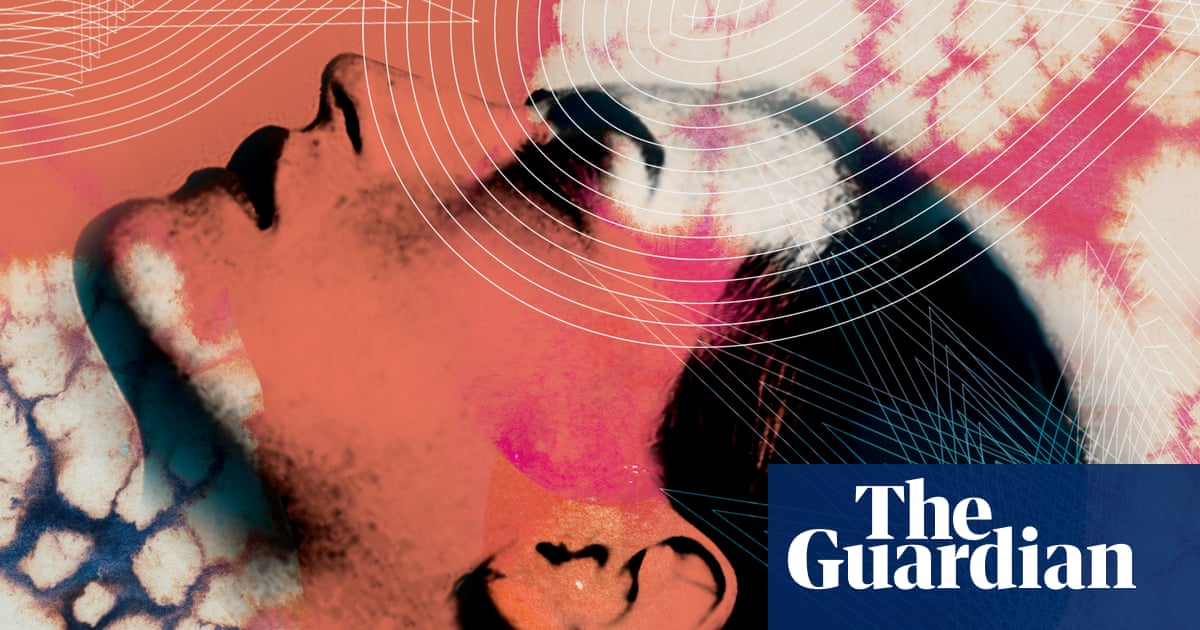
In 2020, the author Michael Rosen was admitted to hospital with Covid-19 and spent 40 days in an induced coma. In the aftermath, he had a strange and vivid dream: he was at Land’s End in Cornwall at the edge of a perilous cliff. He tried to squeeze through a hole in a wall to get to safety but got stuck.
“Immediately after the dream, I can remember feeling first that it was so real, that I had ‘been there’ on the cliff and my wife, Emma, helped me. It really felt like it had happened,” Rosen recalls. “This has stayed with me. I sometimes catch myself thinking that there really was a time when I was stuck on the top of a cliff on the wrong side of a dry-stone wall with the sea hundreds of feet below, and that there was a hole through which I could escape that Emma was pushing me through.”
It is a perfect illustration of how dreams can depict waking life in a bizarre and symbolic way, but also of how such imagery can provide inspiration and comfort. In Rosen’s case, a reminder of the support that enabled him to pull through after a near-death experience.
Like many writers before him, Rosen used his dream as inspiration for a poem included in his book Many Different Kinds of Love: A Story of Life, Death and the NHS. On reading it, Mark Blagrove, a professor of psychology at Swansea University, invited Rosen to participate in an online dream salon at London’s Freud Museum. For the uninitiated, dream salons allow a person to share their dreams and receive insights from the audience. Rosen received dozens of questions and insights about his dream, including the observation that Land’s End could be a play on “life’s end”.
“There’s always been this trope that there’s nothing more boring than hearing about someone else’s dreams,” says Blagrove. “Yet it’s something we feel compelled to do.” Before he started attending dream sharing events, Blagrove was sceptical. “I thought it was like reading horoscopes or something. But then I went to one and shared a dream of my own and received poignant and meaningful feedback.” He went on to create a research programme on dream sharing; his most recent study has established a link between dream sharing and increased empathy among listeners.
Blagrove is keen to point out that while we may share dreams for their bizarre or entertaining aspects, a lot of them are rather mundane. In his book The Science and Art of Dreaming, co-authored with Julia Lockheart, he cites research showing that 83% of dreams relate directly to waking life events, a fifth of those from the previous day. People tend not to dream of tedious activities, though. The study We Do Not Dream of the 3Rs found that reading, writing and arithmetic are too lacking in human drama to show up while we snooze.
In a world where so much is driven by algorithms and data, it’s not surprising that oneirology – the study of dreams – continues to fascinate us. So many mysteries persist. Why, for example, do I keep having a recurring nightmare about having to sit a random philosophy exam at university? Or how about a happier dream I often have about finding an extra room in my home? Sometimes it’s a secret garden – what would Freud have to say about that?
As it happens, the “father of psychoanalysis” believed that all dreams contain a repressed wish, usually sexual. His rival Carl Jung disagreed, theorising that dreams were connected to nothing less than the entire history of humankind, the collective unconscious. Most modern researchers now view dreams as a big brain dump, a way of integrating experiences and alerting us to potential threats we may have overlooked while awake.
Psychologists have hypothesised that the purpose of nightmares is to overcome perceived danger while dreaming and that this has an evolutionary advantage in waking life. Research among Kurdish children living in an environment where their wellbeing is constantly under threat found that they reported a much higher number of dreams with menacing content than those living in peaceful circumstances. In other words, somehow nightmares are connected to basic survival.
It can be particularly difficult to untangle the meaning of recurring dreams like this, given they leave people drained and upset. Isabella Gray had a nightmare about having to drive a bus – definitely not job-related as she works as a goldsmith. “I used to have the dream all the time. I would be driving from an odd vantage point, like from the top deck, reaching right down to the steering wheel with long arms or trying to drive the bus down narrow steps. It happened so regularly that I would wake up stressed and tired.”
Gray heard dream psychologist Ian Wallace on a radio show and emailed him about her dream. “He told me my bus dreams were about having to control everything in my life and feeling there is no support. And I did feel like that! I look after a lot of people; everything is on me all the time. As soon as he explained it to me, the dreams completely stopped, never to return.”
Sometimes, a dream can offer more literal wisdom. When Kyle Frank was at university, he was suffering from disfiguring acne that had dogged him since his teenage years. The GP prescribed a new medication, which had debilitating physical and mental side-effects. Then, one night, he had an intriguing dream. “I was walking through a jungle and I felt like a young boy again exploring in nature. Up ahead, I saw a village and a group of older men gathered by a stream. They were preparing some kind of potion. One of them beckoned to me: ‘The way you are doing things, it’s not going to work. You need to find a solution yourself, and help others.’”
The dream struck Frank as bizarre and he didn’t think anything more of it. But on holiday in Bali, he encountered people making skincare remedies and became intrigued by plant-based medicine. Back home in his fathers’ kitchen, Frank started experimenting with ingredients such as lemongrass, aloe vera juice and seaweed. After much trial and error, he found a formula that transformed his skin. “I was really happy. And that would have been the end of it. But once I was back at uni, people kept asking me what products I had used to clear up my skin.” A business was born, and a grant from the Prince’s Trust followed. “Details of the dream kept coming back to me, especially the part about helping others. It gave me the spark to create the remedy, and the confidence to turn it into a business.”
It is an inspirational story but the process of getting wisdom from dreams is frustrating for many because they find it impossible to remember them. Blagrove suggests that, for this task, technology is your friend. “Use your phone, assuming you leave it beside your bed. When you wake up, turn the voice recorder on and try to recall as much as possible. If you don’t, the dream will just disappear. So, make a record of it, and don’t judge it even if you think it’s nonsense or mundane.”
It might sound like a lot of work or a recipe for annoying partners, but there are good reasons for doing so. Documenting your dreams is a crucial element in learning how to lucid dream, a technique that is being hailed as a cure for post-traumatic stress disorder (PTSD), anxiety and nightmares as well as enhanced creativity and athletic performance.
“A lucid dream is a dream where you know that you’re dreaming as the dream is happening,” says Charlie Morley, the author of Lucid Dreaming Made Easy. “So, you’re still sound asleep but in the dream and you are telling yourself: ‘I know this is all a dream.’ Most people have had a few. If you reckon you haven’t, you might want to think about whether you have ever had a nightmare where you’ve reassured yourself by saying: ‘This isn’t real – I have to wake up.’ That’s also a lucid dream.”
It may sound far-fetched, like something you have seen in a movie (in fact, the film Inception captured the power of lucid dreaming very successfully), but Morley maintains that choosing what you dream about and controlling what happens are skills that anyone can learn. Might I be able to use them to improve my tortoise-like running speed?
“There have been several studies showing that lucid dreaming can enhance performance,” Morley tells me. “In a lucid dream, you are doing more than visualising – you are there in a 3D projection in your mind. The results exceed merely visualising, which has been widely embraced by sports professionals.”
Great, so I will be running the London Marathon next year. Where do I start? Hacking your dreams begins with the dream diary. To manipulate your dreams, you need to recognise patterns, Morley says. “Let’s say that after a week of noting down your dreams, you look back and see that you’ve had three zombie dreams or several visits back to your childhood home. These are part of your unique personal dreamscape.” The idea is that once you become familiar with your dreams, particularly what the lucid dreaming pioneer Stephen LaBerge termed “dream signs”, you will quickly be able to recognise that you are dreaming.
“A dream sign is anything that makes you realise that you are dreaming. For example, if you dream that you are walking down your street with your dog: no dream sign. But if suddenly Donald Trump appears riding a blue dragon, you know it’s a dream.”
These signs are known as “lucidity triggers”, acting as reminders that it is time to start putting your dream plan (in my case, running faster than 5.6km an hour) into action. To do this, I’m told that as I fall asleep I need to repeat “I remember my dreams, I have excellent dream recall” 21 times. Then, when I’m in my dream, and I recognise a dream trigger, I can start running and imagine myself running really fast.
Well, that’s the theory. I’m afraid when I put this into practice, the first night I felt so stressed about trying to lucid dream correctly that I couldn’t get to sleep. The second time I tried, I had dreams about interviewing a lucid dream expert; and the third time, ominously, I dreamed that I fell over and injured my ankle. Back in real life, my speed remains pathetic.
Blagrove sounds a note of caution about some of the miracle claims being made about lucid dreaming. “Although there are scientific, health and recreational benefits, there have been questions raised in the scientific literature on whether it is a good idea to cultivate lucid dreaming. Some have cautioned that lucid dream techniques might affect sleep quality. Also, if dreaming does have specific functions for processing emotions and memory, then deliberately altering the plot or contents of a dream or even just observing that one is dreaming might have an adverse effect.”
One area where there may be real benefits is with victims of trauma. Lucid dreaming is particularly pertinent to PTSD because victims often relive their traumas in chronic nightmares.
In 2021, Morley facilitated a study with the Institute of Noetic Sciences in California and US veterans suffering from PTSD. Participants were each given a “dream plan” to enact during their nightmares. These included intentionally changing the outcome of a recurring nightmare or simply staying present in the dream event, to allow it to be fully witnessed and integrated. After a week, 85% of participants were no longer suffering from PTSD. “They had to triple-check the results because no one believed them,” says Morley.
Another use for lucid dreaming is to find creative inspiration. Tree Carr, the author of Conscious Dreaming, has run workshops at the Tate Modern and works with artists. “My favourite exercise is one called dream incubation. An hour before sleep, go to bed with a notebook. You don’t want blue light from devices. If you’re an artist, sketch some doodles; if you’re a poet, free-write some verse. You want to incubate the creative process as an intention that will continue into your dreams. Do it until you feel like dozing off.” As you’re drifting off to sleep, she suggests telling yourself: “Tonight my dreams are going to give me a creative breakthrough” or: “Tonight I’m going to receive a song or painting or a solution in my dreams.” “Do it for a month and see what happens; it can be inspirational.”
Of all the different types of dreams, Blagrove mentions that the most poignant and comforting is also one of the most common – a recurring dream featuring a loved one who has died. “Although those dreams are bringing back the pain of loss, they can be healing because sometimes the person will appear fit and well. They might have a message like: ‘Everything will be OK’ or other words of reassurance. That can be deeply meaningful for the dreamer.”












